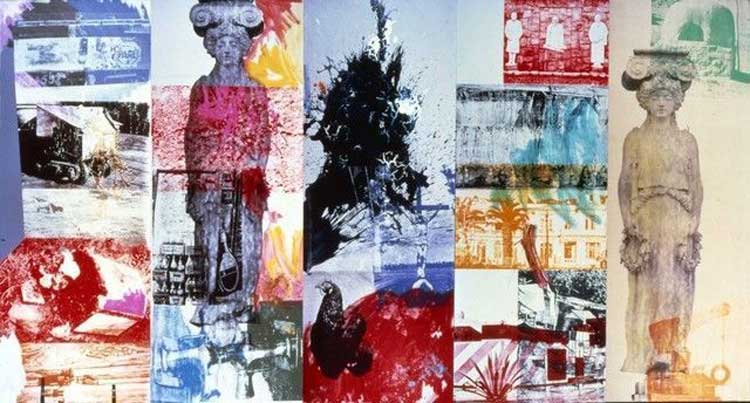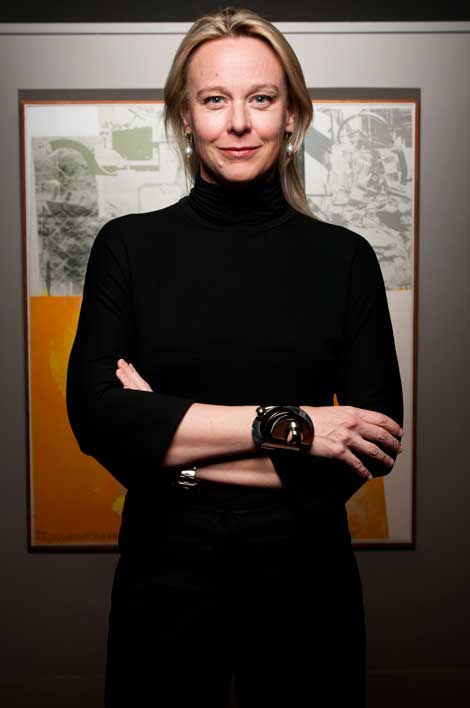If you follow current art world news, no doubt you’ve noticed the Robert Rauschenberg Foundation popping up more frequently. Two of their initiatives, the Emerging Curator Competition and the Artist as Activist grant program opened for submissions in September and closed just recently, and a new grant program centered on discovering and implementing solutions to combat climate change—the Climate Change Solutions Fund—launched on November 10th. What these three programs have in common is their clear connection to Rauschenberg’s aesthetic and political concerns, as well as the fact that they represent a new and dynamic direction for an artist’s foundation to take.
The Foundation, headed by Executive Director Christy MacLear, considers one of its primary goals open access to Rauschenberg’s work. With this in mind, the Foundation redesigned and launched their website in September, offering users unprecedented digital access to the modernist giant’s art and archives.
The Emerging Curator Competition, MacLear told me in early October, built off that goal of open access. Undergraduate and graduate students utilized Rauschenberg’s works as well as any of the 40,000 artworks on Artsy.com, the Foundation’s partner in the competition, to digitally curate their own exhibition. An illustrious panel of judges, including Columbia University’s Brandon Joseph, MoMA’s John Elderfield, and Christopher Rauschenberg, the artist’s son, chose three finalists; the winner was selected by the general public. MacLear noted, “The access truly is global and the opportunity is truly democratic, which I really love. It’s the idea that any student from anywhere who has access to a computer at their school can work with their professor and develop their proposal.” The competition’s focus on students was part of MacLear’s intent to make sure the “sense of discovery Rauschenberg introduces people to happens at all levels.” The winner was just announced a few days ago—Nicole Bray, who studies at the Sotheby’s Institute in New York.
Similarly, the Artist as Activist grants and fellowships are related to Rauschenberg’s own activist efforts. The artist offered emergency relief grants to artists, created the first Earth Day poster, devised the Rauschenberg Overseas Cultural Exchange (ROCI) to create a network of artists worldwide working for peace, and gave away thousands of dollars to diverse political and social causes. In that spirit, the grant is open to artists of all media whose work addresses and poses a solution to a global challenge. Grants are especially useful for this type of art, which can be both very expensive to create and implement, as well as occasionally controversial. MacLear said the Foundation wants to promote this risk-taking and free up artists to engage in work that might not have a commercial application. She explained, “We want to enable artists to do things without having to sell something. That space you’re allowing people to go into requires risk-taking capital. We don’t yet know what it’s going to turn into, but we love that people are getting engaged in this way.”
The solution component of the art is crucial, though, as the Foundation’s Director of Philanthropy Risë Wilson explained: “It needs to have tangible results. It’s not just about awareness. It really is trying to move toward actions, to move toward solutions.” The Foundation’s initiatives promote the idea that artists are uniquely positioned to call attention to pressing issues, and that the fusion of art and activism is more important than ever. She sees that “this community of artists has been hungry for this level of support,” which, as she marvels, is borne out by the fact that she received a proposal on the first day the program opened—and hundreds more in the following weeks.
The grants offered for addressing climate change come from this same approach of adapting Rauschenberg’s concerns to the contemporary landscape. Wilson said, “Just talking about the data [on climate change] hasn’t actually solved the problem yet. Clearly we need to come at this from a new angle, so why not invite artists to the table–not just to make the thing pretty, or to turn the spreadsheet into a chart, but to actually be at the table to think about the problem differently.” Pilot grants were given to individual artists, but when the program officially opened, it offered grants of $25,000 to $100,000 over two years to groups and institutions working to reverse the effects of climate change in fields as diverse as academia, urban planning, policy-making, and community organizing.
These programs, combined with the unprecedented digital access provided by the website, augur a new direction for an artist’s foundation. While most foundations are simply dedicated to the preservation of the artist’s legacy and managing their estate, the Rauschenberg Foundation believes its goal is to not only promote Rauschenberg’s art but also to pass a generational baton and facilitate the aesthetic development of new artists and problem-solvers. “Rauschenberg,” MacLear says, “leveraged that [artistic] platform to make a difference in the world,” and she hopes that the Foundation’s new endeavors will allow others to do the same.





